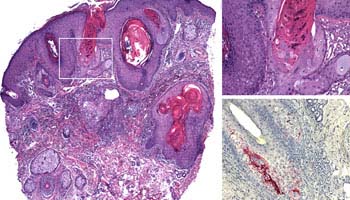A physician can easily diagnose shingles based on the typical clinical findings along with a previous history of chickenpox or shingles.
Tests are very rarely performed to confirm the diagnosis; however, when necessary, the following tests can be done:

- Viral culture of the skin lesions: Culture studies for varicella-zoster virus can be done but this method is not resorted for practical purposes because the virus grows very slowly
- Tzanck test: This test helps to see the peculiar cytological changes of the HSV infection. Fluid is aspirated from an intact vesicle with a sterile syringe and the vesicle is then unroofed to make an ulcer. With the help of a sterile instrument the ulcer is then scraped and the material is put on a microscope slide, dried and fixed for staining. If multinucleate giant cells are found, the test is considered positive. By using immunofluorescent antibody reagents, the smear can differentiate between herpes viruses and non-herpes viruses; however, the smear does not help in differentiating between the herpes zoster and herpes simplex infections.
- DFA or Direct Fluorescent Antibody staining of virus infected cells scraped from the base of the lesions is a rapid, specific and sensitive method for diagnosing shingles
- PCR or Polymerase Chain Reaction is a more sensitive method for detecting the virus DNA for diagnosing shingles from properly collected biopsy material
- Serological methods such as levels of IgG and IgM are useful but less specific and less frequently used















